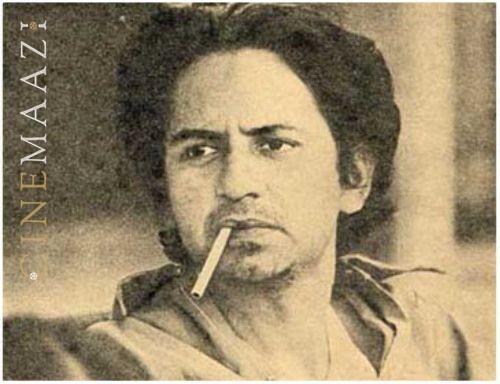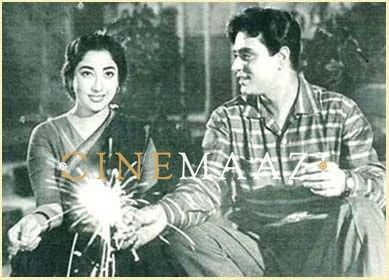Kumar Shahani

Subscribe to read full article
This section is for paid subscribers only. Our subscription is only $37/- for one full year.
You get unlimited access to all paid section and features on the website with this subscription.
Not ready for a full subscription?
You can access this article for $2 , and have it saved to your account for one year.
- Born: 07/12/1940 (Larkana, Sindh)
- Died: 24/02/2024 (Kolkata)
- Primary Cinema: Hindi
Hailed by cinephiles, yet ignored by popular critics and audiences, Kumar Shahani remains arguably the most provocative and misunderstood director of New Indian Cinema. While his films have won both national and international awards, one cannot deny there is a certain enigma about them, their elusive form enchanting and alienating in equal measure.
Born on 7 December 1940 in Larkana, Sindh, his family shifted to Bombay after the Partition. The Partition left a deep impact on a young Shahani. He studied Political Science from the University of Bombay before doing a course in Screenplay Writing and Direction from the Film and Television Institute of India in Pune. The FTII years proved to be formative for him, as he came under the influence of the maverick filmmaker Ritwik Ghatak, who was serving as a teacher there at the time. His study of Ghatak’s cinema imbued a deep interest in India’s epic narrative traditions which he would explore later in his films. He also studied under the Marxist historian and anthropologist D D Kosambi. His graduation film The Glass Pane (1965) experimented with realist traditions, also explored in the short film Manmad Passenger (1967). After graduating in 1967, he received a scholarship from the French government for higher studies and went on to study at the Institut des hautes études cinématographiques (IDHEC). He assisted the celebrated auteur Robert Bresson in the making of Une Femme Douce (1969). He witnessed the student and worker uprising of May 1968 which had an impact on his understanding of the role of the artist in society.
He returned to India in 1972 to make his first film Maya Darpan with funding from the Film Finance Council. Exploring the dynamics of feudal patriarchy through epic traditions, the film rejected all traditional narrative norms. Both of Shahani’s key influences, the epic form and shifting class structures were in ample display, centred around the tension between feudal traditions and an emergent capitalism. It received the Filmfare Award for Best Film (Critics) but was also the subject of a critical assault from all quarters including a lampooning from Satyajit Ray. This made it very difficult for Shahani to get any funding and he would not make another film for 12 years. The film has since then gone on to become a cult favourite of cinephiles and film students. It was also praised for its use of colour, which represented a conscious experimentation with tones to reflect a psychological state of mind. It was also celebrated abroad. When it opened at the National Film Theatre in London in 1973, the British film critic Mansell Stimpson wrote: “The most outstanding event of the season was our introduction to the work of Kumar Shahani. His Maya Darpan, superbly and sensitively photographed in colour, marks him out as the most talented Indian director to appear since Ray.” The film’s sound also referenced Ghatak’s Meghe Dhaka Tara (1960).
In 1976 he was the recipient of the Homi Bhabha Fellowship to study the epic traditions of pre-modern India. The resultant study encapsulated the Mahabharata, Buddhist art, classical music and the Bhakti movement. He brought all these influences to bear in his next film Tarang (1984). The film was considered a departure from his approach in Maya Darpan. The film had an acclaimed soundtrack composed by Vanraj Bhatia including a complex Ektaal-based number sung by Lata Mangeshkar. It featured big names like Smita Patil, Amol Palekar, Girish Karnad and Shreeram Lagoo. The film once again focused on a conflict between feudalism and modernity, highlighting class tensions. Though it followed a traditional narrative arc, he wanted to show the effect of traditional epic forms on popular art.
He made three more feature films – Khayal Gatha (1989), Kasba (1990) and Char Adhyay (1997) and a number of short films and documentaries. Featuring beautiful cinematographic work from K K Mahajan and a great performance from Mita Vashisht, Kasba won the Filmfare Award for Best Film (Critics). It was adapted from the Chekov short story In The Ravine. Khayal Gatha explored the khayal form and historical and cultural implications of classical music practices. He would also explore classical dance through the maestro Kelucharan Mohapatra in the documentary Bhavantarana(1991). It won the National Film Award for Best Biographical Film. His last feature film – Char Adhyay analysed the relation between female sexuality and nationalism and featured a complex non-linear time structure. It was adapted from Rabindranath Tagore’s novel Char Adhyay.
Other significant filmic experiments by him are the short films Object (1971) and A Ship Aground (1989), and the documentary Fire in The Belly(1973). In The Bamboo Flute (2000) he explored the influence of the flute in the cultural history of India. He was also a prolific essayist, with works published in Framework and Social Scientist. He co-edited the book Cinema and Television (1991). He also directed two stage plays La Voix Humain and Kunti featuring the actress Alaknanda Samarth.
Despite their inaccessibility and experimental form, Shahani’s films are an important step in the history of Indian cinema. They stretched the film form to its limits and produced a series of images never seen before or since. In his ceaseless experimentation, Shahani embodied the spirit of the independent filmmaker like no one else did.
-
Filmography (3)
SortRole
-
Char Adhyay 1997
-
Fire in The Belly 1973
-
Maya Darpan 1972
-







.jpg)



